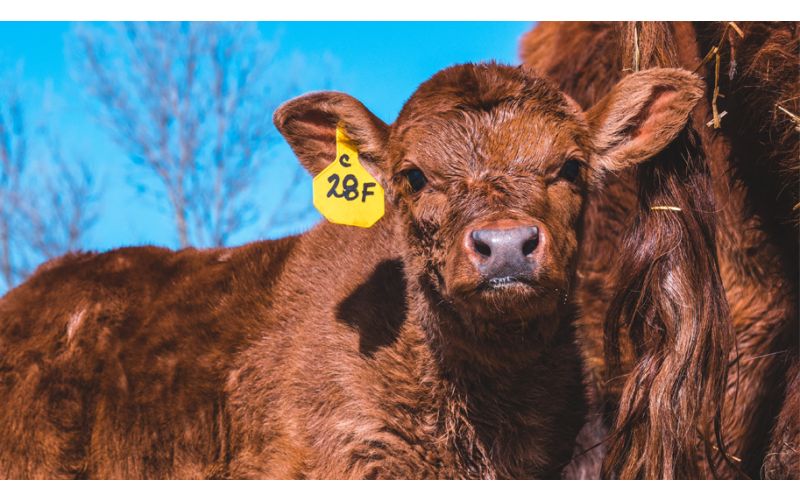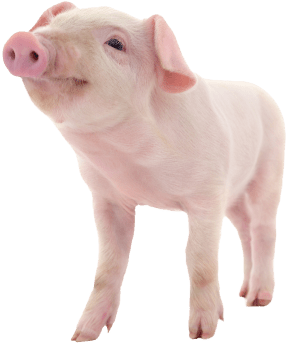
Livestock Identification: Understanding Ear Tags
|
|
Time to read 4 min
 You are being redirected to QC Supply Pharmacy, where you’ll find a wide selection of high-quality prescription and pharmaceutical products for animals of all sizes.
Enjoy the same great service and expertise you trust from QC Supply.
Click below to continue shopping.
Continue
No thanks, stay on the main site
Powered by
You are being redirected to QC Supply Pharmacy, where you’ll find a wide selection of high-quality prescription and pharmaceutical products for animals of all sizes.
Enjoy the same great service and expertise you trust from QC Supply.
Click below to continue shopping.
Continue
No thanks, stay on the main site
Powered by


|
|
Time to read 4 min
Gone are the days when cows and other livestock were known only by names like Buttercup, Rosie, and Bluebell. Today, livestock ear tags and cattle tagging have become serious tools for cattle identification and are an important means of identifying livestock. Livestock management now relies on these unassuming but vital agribusiness tools. The new farmer or rancher may not realize that ear tags are more than numeric “names”. They are also superb and simple organizational devices that help farmers keep track of and record livestock in a variety of useful and important ways, playing a key role in animal tracking and animal traceability .
If you didn’t know already, an ear tag is a small object made of plastic or metal that pierces the ear of livestock or other animals by way of an applicator. Around the farm, they are visual aids that use numbers, colors, or a combination of both for organizational purposes in livestock tagging systems. Some ear tags, known as insecticide ear tags or “fly tags”, even help keep pests like horn and face flies away.
On a larger scale, premise identification ear tags have been federally mandated on all cattle sold for profit or moved across state lines. They are also used by the NAIS (National Animal Identification System) and the USDA APHIS Livestock program to track (and help prevent) the spread of diseases, like mad cow or scrapie. This is important information for the farmer who plans to buy or sell livestock.
Sheep, goats, cattle, and pigs most often will have livestock ear tags. While some herd animals, like cattle, are identified individually using cattle identification, other animals, like sheep and goats, are typically identified by the herd. Some animals may require more than one ID tag. Other animals, like poultry, are often identified by the use of leg bands.
Plastic livestock identification ear tags are the most common form of identification tag because they are both cost-effective and highly visible. They are most often used to show numerical sequences for identity. Some farmers will identify their females sequentially when the animals reach maturity and enter the herd. Using a combination of letters and numbers, animals can be accurately and reliably tracked. For instance, the letter “A” on a cattle ear tag could indicate the year, say 2015. So, “A0001” would mean the first animal born in 2015. “C0012” would mean the twelfth animal born in 2017, etc. Once “Z” is reached, return to “A” or go on to “AA”.
Calves and other young animals can be tagged to link them to their mother in numbered pairs and/or birth sequences. In this instance, heifers and other immature animals will get a new number to avoid repetition once they mature and enter the herd.
Different color tags and different tag placement, for example in the left or right ear, help farmers save time and effort by quickly providing information. For instance, ID ear tags can help identify the sex of an animal from afar; tags in the right ear for males, and in the left for females. This can be especially useful for sorting animals in a pen or while animals are passing through a chute. ID ear tags can be used to indicate an animal’s lineage which is also useful for breeding purposes. Tags also can be used to indicate sick animals, thereby contributing to overall farm animal health.
If an ear tag uses Radio Frequency Identification (RFID) technology, then those tags are referred to as RFID ear tags or Electronic Identification (EID) tags. Many people use the terms RFID and EID interchangeably. In reality, RFID refers to the technology in the livestock identification tag. Some farmers also use “EID” to refer to the specific 15-digit number on the tag itself.
EID tags are one way the NAIS (National Animal Identification System) tracks livestock sold for profit or that are moved across state lines. In 2004, the U.S. government asked but did not mandate, farmers and ranchers, to use RFID ear tags on all their cattle as part of the NAIS, spurred by the first case of mad cow disease. Since then, a database has been established that keeps track of all animals tagged with RFID technology. Federal and state agencies sometimes have different requirements for tagging and tracking livestock and even different regulations between species. New farmers and ranchers need to understand what’s required for cattle identification and livestock management.
NAIS is not without criticism, as EID tags are expensive and can put small farmers at a disadvantage, however tracking cattle electronically is a practice used worldwide. Australia uses RFID devices to maintain its livestock database and, according to Wikipedia, New Zealand is planning a similar tracking system.
The central function of federal ID programs is to help monitor animal health. Tags help show for instance, what animals came from a herd infected by, or exposed to, disease. Herds are rarely sold together. Most often, herds are split up and the animals are dispersed. Electronic identification is an important tool if these animals need to be traced and destroyed.
Ultimately, all this data collection and record keeping is important for public health. The data helps ensure we have only healthy meat for sale at the grocery store and if a recall is necessary, it helps health officials alert what regions of the country are affected, in the event of a disease outbreak.
At the end of the day, you might keep on calling your favorite cow Buttercup but make sure she’s got the ear tag that says she’s A001, too.
Need more supplies for cattle? We have livestock ear punchers, including popular options like:
Do you have an innovative ear tag system? Tell us all about it in the comments section!
Have any questions? Give our experts a call today at 888-433-5275.